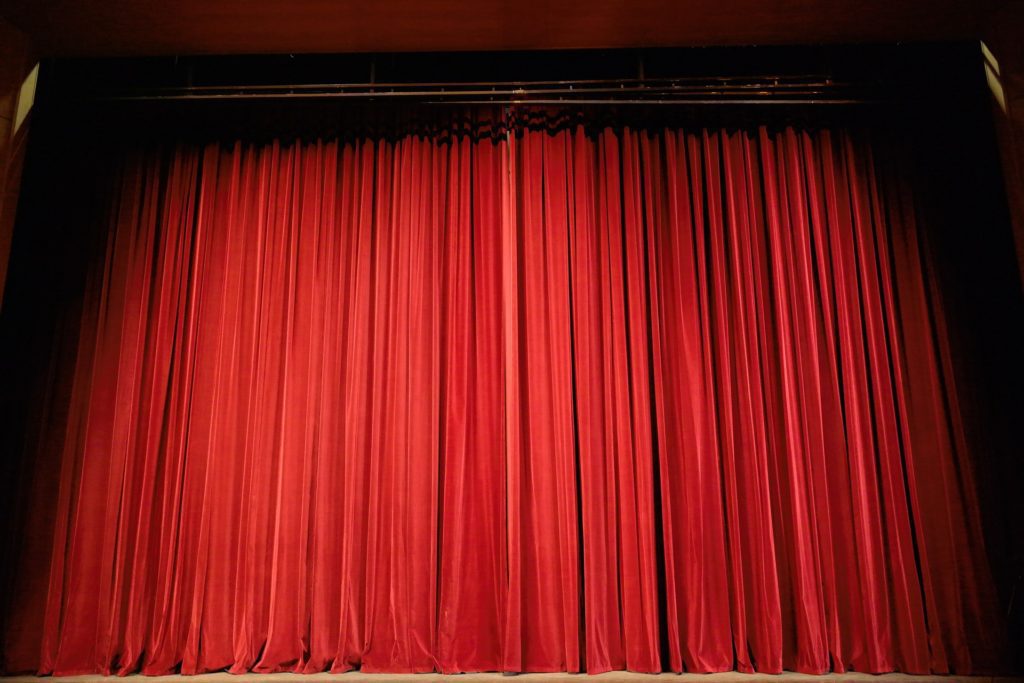When you think of a traditional performance, you picture the full setup: lighting rigs, light and sound equipment, raked seating – and across the front of the stage, a pair of rich theatre drapes or grand drapes.
Modern theatre curtains do more than just mark the start and end of a show. They’re key to setting tone and managing stage space. Whether you’re kitting out a school hall or a full-scale venue, understanding the role of each curtain type can help you achieve the perfect theatre setup.
Here’s a quick breakdown of the most common theatre curtain types and what they’re used for.
Front Curtain (Front Tabs)
-
Sits just behind the proscenium arch.
-
Opens horizontally or flies upwards, depending on the rig.
-
Usually made of heavy, coloured fabric or wool serge.
-
Hides scene changes and marks the beginning or end of the performance.
Some venues use extra fabric for a more luxurious look, especially with grand drapes.
Scrim
-
A gauze-like fabric that changes depending on how it’s lit.
-
Lit from the front: opaque.
-
Lit from behind: transparent.
-
Often used for dream sequences, memories, or to add visual depth.
Scrims are great for working with light and sound effects to build atmosphere.
Backdrop
-
Hung at the rear of the stage.
-
Often painted with scenery like buildings, landscapes, or interiors.
-
Adds visual storytelling without needing bulky set pieces.
Think of it as your static scene-setter – simple but effective.
Cyclorama (Cyc)
-
A smooth, unpainted cloth used with lighting or projection.
-
Can be lit with colours, gobos or video projection.
-
Ideal for abstract sets or minimalist shows.
A blank cyc combined with clever lighting can suggest anything from dawn to deep space.
Dress Legs and Borders
These aren’t showy, but they’re essential.
-
Legs: Narrow curtains down the sides. They hide crew, props, and gear in the wings.
-
Borders: Horizontal curtains across the top. They block rigging and lighting bars from view.
Together, they help maintain clean sightlines and support the illusion of a complete set.
What to Consider When Choosing Theatre Curtains
-
Performance space – School studio or commercial venue?
-
Fabric weight – Heavier options block sound and light, lighter ones offer flexibility.
-
Flame retardancy – Mandatory for most public spaces.
-
Aesthetic – Extra fabric or pleating for that grand drapes effect?
Need Advice?
Stage & Studio Projects design and install custom curtain track systems, theatre drapes, blackouts, and star cloths. Whether you’re fitting out a studio, school stage or commercial venue, we’ll help you find the right solution for your performance space.
Contact us to discuss your project with our experienced team.
